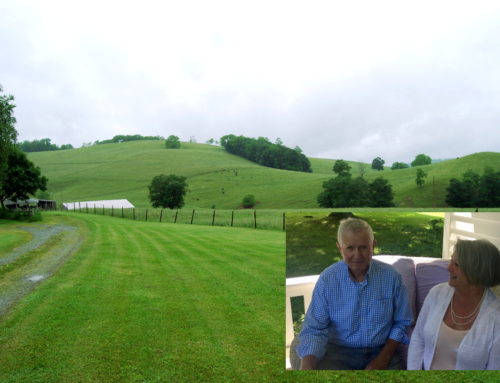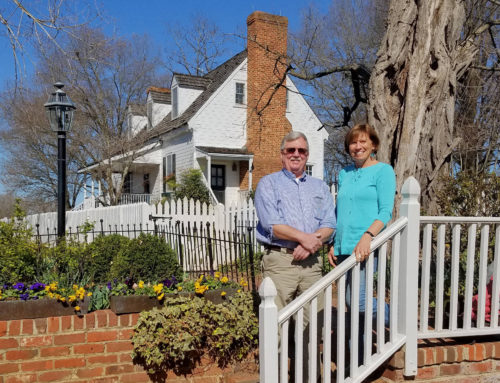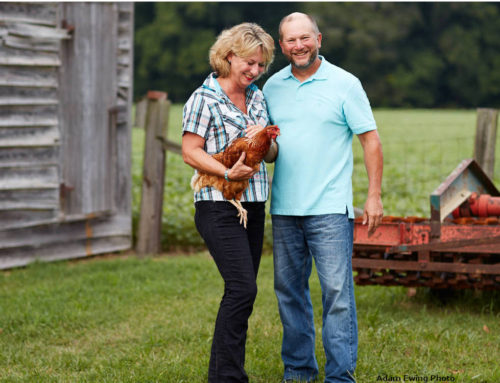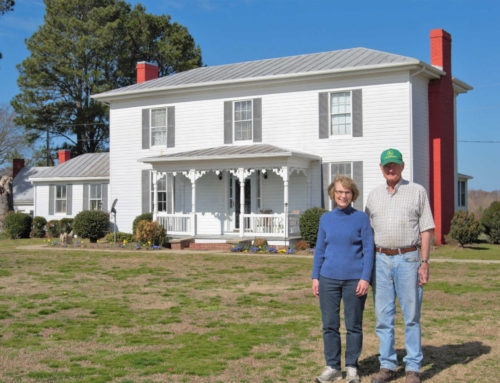Appraiser Assists as Schoolteacher and Wife Protect Dinwiddie Timber Tract
“We are the land.”
That’s how retired mathematics teacher Clay Jones explained his decision to place his 305-acre timber tract in Dinwiddie County under conservation easement with the Virginia Department of Forestry.
Raised on a 671-acre farm in Henrico County, Jones remembers streams with water so clean you could drink it, abundant timber for sustainable harvest, and bountiful wildlife, such as the Eastern whip-poor-will, whose call he hasn’t heard for a long while on the 42 acres the family still owns.
Loss of that family farm – now the location of the much-developed Innsbrook community – along with childhood years spent listening to his elders who managed timber land and ran a sawmill, gave Jones an unfailing sense of direction.
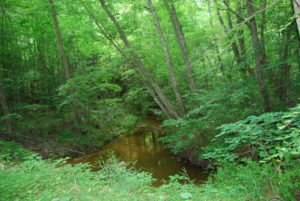
Streams and small wetlands are among the conservation values protected by the easement. (Conservation Partners photo by Sherri Tombarge)
“I could not buy my home place back,” he said with regret. But by buying land when he could on his public school teacher’s salary, and harvesting timber when he needed to, Jones now owns 15 tracts in eight counties, land he hopes to preserve in timber.
Putting the Dinwiddie tract under conservation easement required the work of a range of dedicated professionals, including Wesley Woods, president of Myers & Woods Appraisal Group Inc., who completed the appraisal.
“The appraisal is one of the most important aspects of the easement process because … we’re establishing the before and after values of the property,” said Woods.
The before and after values are used to determine the benefits the landowner may eventually claim. Even though landowners who place property under conservation easement continue to own and work their land, they are nevertheless making a charitable donation since certain uses of the property are restricted in perpetuity in order to protect conservation values. For the Dinwiddie property, these values include nearly 8,000 feet of streambanks, numerous springs and small wetlands, wildlife habitat, and U.S. Natural Resources Conservation Service-designated Highly or Very Highly Productive Soils.
Woods’ appraisal demonstrated that restricting use of the land for livestock and development decreased its value, creating a donation eligible for a federal tax deduction and receipt of sellable tax credits under Virginia’s land preservation tax credit program.
As part of the appraisal process, Woods toured the tract via timber trails, with Clay, his wife Linda, and one of their grandchildren, all safely ensconced in pickup trucks to avoid ticks and chiggers and 95-degree weather.
“Those are the type of people that you love to work with,” said Woods. “They’re salt of the earth people.”
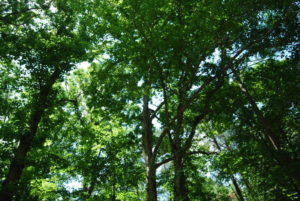
A timber management plan will govern future harvests on part of the tract while others, such as this mixed parcel near the entrance, will remain untouched. (Conservation Partners photo by Sherri Tombarge)
Woods completed a preliminary appraisal to help the Joneses weigh the costs of the easement process against the benefits of protecting the land and then later completed the full appraisal – to the tune of around 200 pages of maps, property descriptions, zoning, soils analysis, and feature analysis, including stream and road frontage – so they could claim their benefits.
“He did an excellent job,” said Clay. “We were very pleased.”
Having heard about the easement program initially through a Virginia Cooperative Extension seminar, the Joneses contacted attorney Lee Stephens to get the process started. Only then did they begin to understand how complex the process is, and how great the benefits.
Stephens, an expert in the legal aspects of the conservation easement donation process, steered them to Conservation Partners. Conservation Partners oversaw the entire process for the Joneses, coordinating the work of Woods, Stephens, and their accountant and
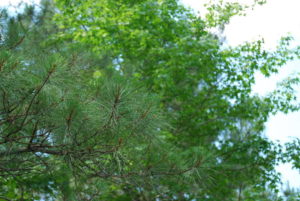
Loblolly pine grow among hardwoods over much of the tract. (Conservation Partners photo by Sherri Tombarge)
processing in house the many required forms and applications.
It was Taylor Cole, Conservation Partners’ President and Director of Landowner Services, who told the Joneses about the state tax credit program, through which they claimed the largest share of their benefits
“We are so grateful,” said Linda, with Clay chiming in as they noted Conservation Partners’ professionalism, knowledge, expertise, promptness, and follow through.
“They’re just easily accessible,” said Linda. “You could call them anytime.”
Of particular note, said Clay, were the “house calls,” when Cole and other staff members visited the Joneses in their home – a good two-hour drive from the office in Lexington – to explain steps in the process and bring forms to sign.
With the help of Conservation Partners, Clay Jones, a public school teacher, and his wife were able to protect land they love in their home state of Virginia.
“Mr. Jones had an interest in forestry and in timber, and he has pursued that passion,” said Woods. “You love to see their story. … [They’re] just good folks.”


